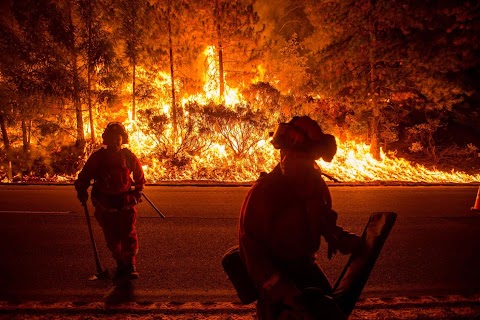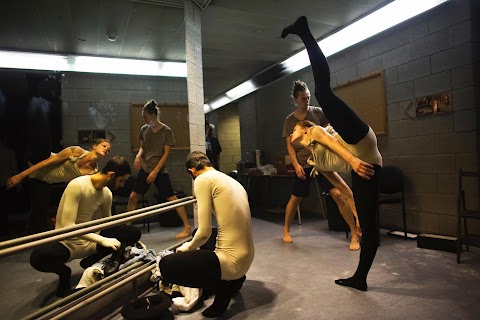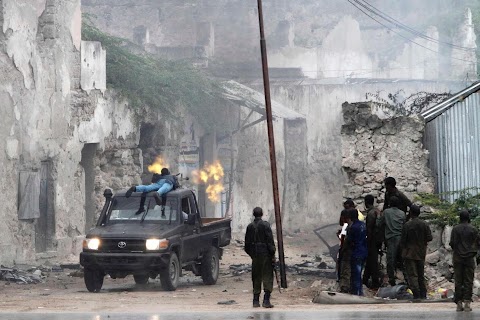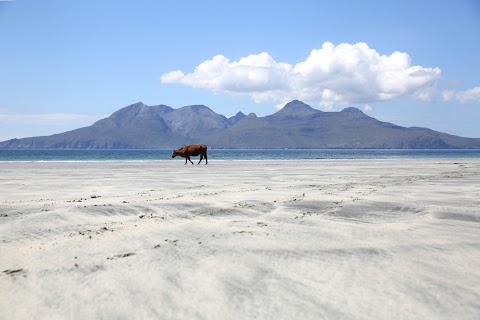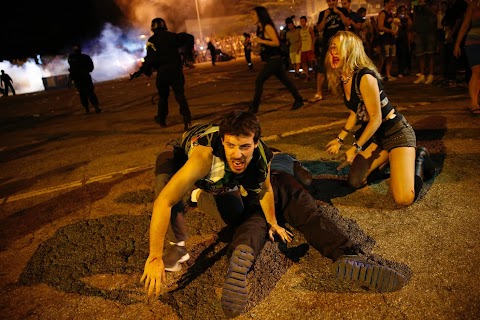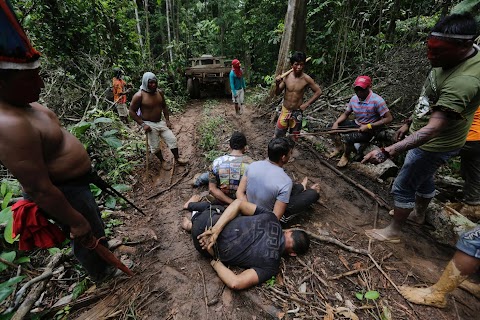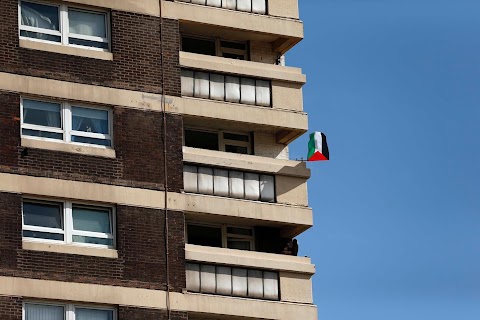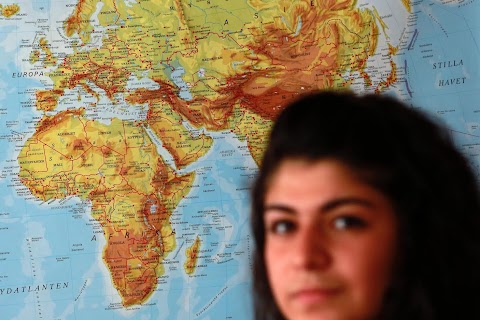
Becoming a man
 Noor Khamis
Noor Khamis
Among the Bukusu tribe in western Kenya the traditional rites of passage, which mark a boy’s journey into manhood, include being circumcised.
The adolescents undergo the ritual in public and without flinching, to prove their courage to the community. Several thousand youths took part in the ceremony this year. Similar circumcision rituals and rites of passage are celebrated in many parts of Africa.

The ceremonies take place in August to give the boys enough time to heal before the school year starts and can take months to prepare.
On the day before the circumcision, the youth will visit his uncle, who slaughters a cow and dresses him with a piece of meat as a personal gift. This grants the boy permission to proceed with the ritual.
The youth is served his last meal before he becomes a man, and his uncle slaps his cheeks to test his bravery.

At dawn, the youths are escorted to a river, where they dips themselves in the cold water to numb their bodies.
Afterwards, they are smeared with mud in front of a crowd of people, before the procession embarks on a trek to the site where the circumcision will take place.

The ritual is carried out in public by a traditional circumciser and without an anaesthetic. The youth must face it bravely without flinching, to demonstrate their courage.
Once the bleeding slows, the initiate is then escorted into his father’s house, which he enters by walking backwards.

A Bukusu youth, who was just circumcised, sits with his parents.
The circumcision is followed by a period of seclusion, after which the initiates take part in another ritual before they are reintegrated into society.

Complications that can result from the circumcisions have led to groups such as the World Health Organization (WHO) to encourage both medical circumcisions and the training of traditional circumcisers.
Evidence suggests that male circumcision reduces the risk of heterosexually acquired HIV infection in men by about 60 percent, according to WHO and UNAIDS research.
Slideshow

Boys of the tribe dance to traditional music in preparation for the circumcision ritual.

A Bukusu youth is addresses by his uncle.

Villagers observe a pre-circumcision ritual.

Bukusu youths wait to be smeared with mud.

Mud is spread over the skin of a youth.

The boys and spectators then walk towards the location where the ceremony will take place.

A circumciser prepares to make the final incision on a youth, as his father looks on.

Friends and relatives crowd around a Bukusu tribe member who underwent circumcision.

He is then covered in a blanket.

The youth’s father assists him outside their home.

A traditional circumciser checks on another boy’s condition following his rite of passage.

A youth who underwent circumcision rests inside a house.
The circumcision, which lasted less than a minute, has to be faced bravely without any sign of pain
As eastern Africa had uncharacteristically fallen silent, I decided to travel over 500 kilometres to western Kenya as schools had just closed and so month-long circumcision rituals had taken centre stage.
The rituals, which are observed in public, represent the annual rites of passage into adulthood for boys aged sixteen and below. The Bukusu community, a sub-tribe of the Luhya tribe, has strongly stuck to such traditions.
I made several calls to local journalists based in those areas, presenting my interest in covering the ceremonies, and continued communicating with them once I had arrived, after an all-day journey.
I left early the next morning complete with a set of instructions from a local friend, and a driver, who doubled up as my guide. I used the drive from Bungoma, a town west of Nairobi, as an opportunity to gain as much information from him as possible.
We arrived at the first house, where my guide introduced me to the head of the family and told him of my intentions to photograph the ceremony.
As is the normal African tradition, niceties were exchanged, all family members were introduced, and my role was explained to each person. All of them appreciated my being there, and felt extremely honoured that their son would be seen as a brave man for undergoing the pain of the ritual.
The circumcision, which lasted less than a minute, has to be faced bravely without any sign of pain. This demonstration of courage is celebrated with joy and happiness by the relatives and friends who make up the crowd.
I was guided to a grass-thatched house where happy family members surrounded 15-year-old Caleb Masinde Wafula, who, covered in a blue bed sheet, had been circumcised in an earlier ceremony.
I spent almost an hour and a half taking pictures in and around the house before I asked their permission to leave for another shoot. As a token of appreciation when you visit the circumcised boys, it is customary to give a gift for their bravery.
The following day was very stressful as the driver failed to show up as agreed. But, having often worked under such conditions, I left the hotel on foot and soon flagged a passing motorbike down. I asked if he could take me to any nearby river, with the wild hope of bumping into a group.
A short while later, the bike suddenly ran out of fuel. Time was not on my side and dawn had already passed. But, luckily, another nearby motorcyclist, who was washing his machine, helped me out.
This time we went the whole way to the river, but had just missed a group who were singing as they started their procession.
I was frustrated and my trousers were soaked to the knees as I had waded into the river with no time to even remove my shoes.
I was almost ready to give up when, out of the blue, I heard singing again and two boys were coming towards me. It was at this moment where I met Kevin Wafula and Justas Baraza, both 16-years-old. They were comfortable with my presence, but I spoke to the head of the group who, in turn, granted me full permission to photograph them.
Most Kenyan tribes continue to perform these rituals when their children come of age. However, a resident attending one ceremony told me that the time has come to do away with such traditions.
“People here are drunk,” he said. “It’s more of a traditional party than the actual rites ceremony.”
